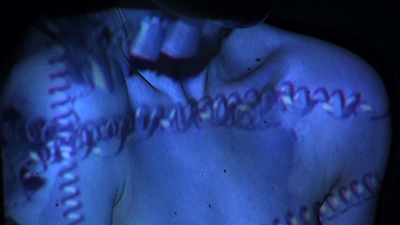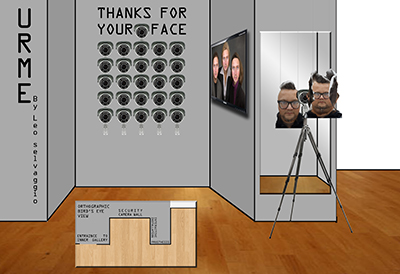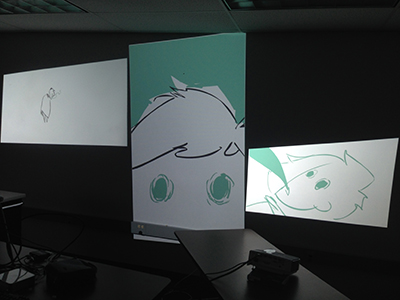The InterArts department is proud to announce that three students will receive the Albert P. Weisman award, a Columbia College competitive scholarship intended to help advanced undergraduate and graduate students complete a substantial media-based project that is already underway. A sum of $2000 is awarded to fifteen applicants.
Media students Greg Browe, Juliana Piscitiello, and Leo Selvaggio all received the award and are planning to use the funding to help with their thesis projects.
Browe is an animator and illustrator, and his work is an exploration and deconstruction of narrative conventions using cartoons and digital media. His project is “Boy in Woods,” an animated, multi-screen video environment which explores a single but multifaceted moment from his comic The Greater Storybook. It details the journey of a young boy through the woods and his encounter with an ominous egg, using three large projections that flank and envelope the viewer. The confusing narrative that results from this encounter challenges and complicates traditionally held notions of linear storytelling, as the moments on screen repeat five separate times, yielding a different result each time.

Piscitiello’s work looks at the struggle of the individual, and asks how the wounded can transform into healers by transforming suffering into story. Her project, “Tin Man,” is part of her ongoing exploration into dancer-specific muscle memory as a storytelling device that reveals the private journey of living with invisible disability. Weaving personal history and narrative into the content of the work, this performance will use the idiosyncratic bodies and voices of three dancers to unveil the complex story behind the invisible disability experience. Piscitiello “questions our perceptions and fears surrounding strength and vulnerability, success and failure.”

Selvaggio’s practice explores identity, and the locus of its formation. He is interested in the disruption that occurs between our internal understanding of who we are, and how our identities are perceived, reinterpreted, and redistributed by others via social action. He calls into question the nature of privacy in the public realm, and work addresses this issue through an examination of surveillance. “UR ME,” his thesis project, is an interactive and sculptural installation that asserts identity as a defense technology against surveillance. “UR ME” challenges viewers to consider the malleability of their identities by misrepresenting and corrupting his own. Rather than camouflage identity or presence, this work invites the public to assume Selvaggio’s identity by allowing them to wear his face as a prosthetic.
Thesis projects will be exhibited in May, with an opening reception on May 16 during Manifest, Columbia’s day to celebrate work of all the students in the college.


